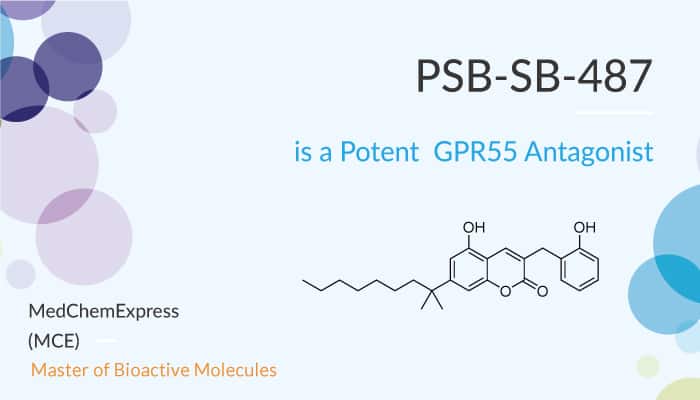GPR55 (G protein-coupled receptor 55) is a G protein-coupled receptor that in humans is encoded by the GPR55 gene. GPR55, along with GPR119 and GPR18, are novel cannabinoid receptors. Like the CB receptors, GPR55 belongs to the rhodopsin-like seven transmembranes G protein-coupled receptor (GPCR) superfamily. GPR55 and CB2 receptors interact and cross-talk with each other at the level of their signaling pathways, either synergistically or contrarily. In addition, GPR55 and CB1 receptors can form receptor heteromers, thereby regulating each other’s functions.
Recent research suggests that lysophosphatidylinositol and its 2-arachidonoyl derivative may be the endogenous ligands for GPR55, and the receptor appears likely to be a possible target for treatment of inflammation and pain as with the other cannabinoid receptors. Recent studies show that the lysophosphatidylinositol/GPR55 system have some connection with obesity in humans. Thus, GPR55 is a new potential drug target for the treatment of diabetes, Parkinson’s disease, neuropathic pain, and cancer.

PSB-SB-487, a 7-unsubstituted Coumarin, is a potent antagonist for the orphan G-protein-coupled receptor GPR55. Meanwhile, PSB-SB-487 has poorer selectivity over other related receptors, acting as a weak antagonist at CB1 with a Ki of 1170 nM, and a partial agonist at CB2 with a Ki of 292 nM. However, this compound shows weak antagonistic properties at GPR18. In addition, PSB-SB-487 with branched aliphatic residues displays considerable concentration-dependent inhibition of lysophosphatidylinositol’s maximal reponse. PSB-SB-487 has the potential for the research of diabetes, Parkinson’s disease, neuropathic pain, and cancer.
To summarize, PSB-SB-487, a Coumarin derivative, is a potent GPR55 antagonist.
References:
[1] Viktor Rempel, et al. J Med Chem. 2013 Jun 13;56(11):4798-810.